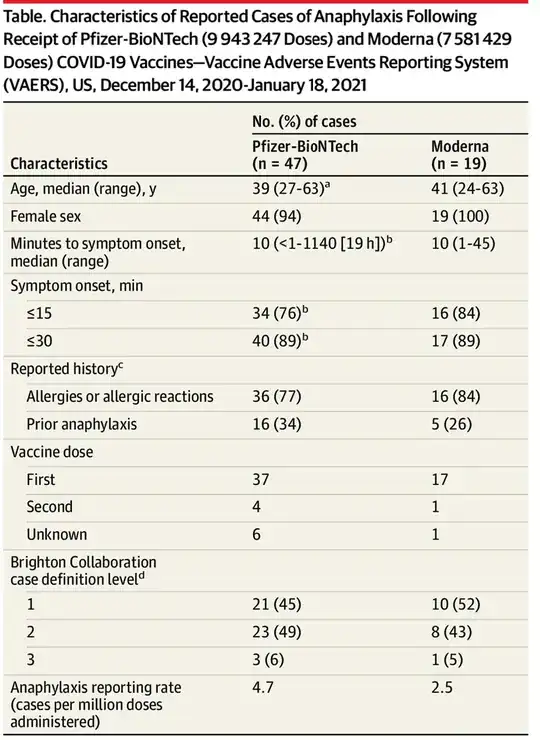Everyone receiving the COVID vaccines is asked to wait for 15 minutes in case they have a bad reaction to the shot. Given that we've now had hundreds of millions of Pfizer vaccine shots injected around the world, is there any data showing how many of those people end up needing medical attention during those 15 minutes (possibly 20 minutes in some areas, as reported in comments)?
If such data is available, do we know how many of those people ended up needing attention because of the vaccine itself? I.e. if you take any random 15 minute period, around 23 Americans will get a heart attack during that time, so logically speaking not all cases of medical problems during the 15 minute period will be caused by the vaccine itself.
Note that I'm only interested in that exact 15-minute waiting period, not any other side effects from the vaccine that are detected later on. I.e. myocarditis is suspected to be linked to the COVID shot for some people, but that's usually detected later on, not during the 15 minute observation period.
